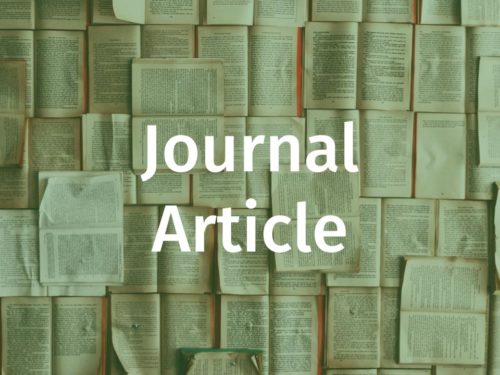This article has already been published on February 18th 2014 at strategic-culture.org
When Germany’s chancellor Angela Merkel asks the public to give space for more negotiations between the Ukrainian president and the opposition leaders before deciding on possible sanctions, everybody understands well that she thinks about sanctions against President Viktor Yanukovych and his surroundings and not against the militant right in the streets of Kyiv. How could it be otherwise? The well-known foundation of her party, the Konrad-Adenauer-Stiftung, made a political figure out of the Germany-situated boxer Vitali Klitschko, thereby supporting his rise as a prominent leader of the opposition. And her former foreign minister, Guido Westerwelle, stood clear in the manifestation front against the elected parliament and presidency together with Oleh Tyahnybok from the far right «Swoboda».
This alliance is not a new one. Let us have a look at the long historic ties between representatives of the Western core countries and Ukrainian rightists and/or secessionists. We do not want to go back as far into history to stress the year 1772, when Vienna as the centre of the «Holy Roman Empire of the German Nation» took control over parts of the vanishing Polish State subordinating the multi-ethnic (mainly Polish and Ukrainian) population into Habsburg Galicia. Nor do we want to focus on the cultural intervention under the Polish king Sigismund III., who laid the path for orthodox Christians to unify with Latin Christianity by the «Union of Brest» in the year 1594/95. In the second half of the 18th century this grabbing for orthodox souls was renewed under the flag of the Viennese ruler Maria Theresa. The implementation of Greco-Catholic bishops and dioceses brought millions of Ukrainians under the religious jurisdiction of Rome, without pushing them towards the Latin liturgy. The historic split between the Ukrainian West and East/South is rooted in this fact.
Today’s opposition on the Majdan square identifies itself with much more dangerous historic figures. And Berlin, Vienna, and Brussels, not to speak of Warsaw, back them. The far right is dominating the streets in the Ukrainian capital. They openly celebrate fascist heroes of the 1930ies and 1940ies. And the West applauds. Some may call it an irony, that the official Germany and the official European Union take every opportunity to discredit and fight so-called right-wing populists at home and at the same time support the Ukrainian coalition of the three oppositional groups and the radical blocks within the manifestations. We do not consider this as an irony, but as a strategic alliance with historical roots. Since generations anti-Russian Ukrainians have been instrumentalized by Western politics, without reaching their own national goals, however.
Just have a look at Oleh Tyahnybok’s «Swoboda», who supported the orange Viktor Yushchenko and his presidential campaigns since 2001. Both – and many others of the oppositional movement – understand themselves and their fight in the tradition of Stepan Bandera, one of the main figures of the «Organisation of Ukrainian Nationalists» (OUN). Bandera was freed from prison in September 1939, when the Wehrmacht overran Poland. Under Polish jurisdiction he had been sentenced to death – later to livelong prison – for murdering the Polish Minister of interior, Bronislaw Pieracki, in 1934. After German expansion into Polish Galicia, which had been incorporated into the Soviet Union according to the Hitler-Stalin-Pact in 1939, Bandera got logistic support from Berlin, and his OUN formed the fore-front against the Red Army. In this function they massacred Hundreds of Jews and Communists on the 30th of June 1941 in Lvov under the shelter of the Wehrmacht.
Stepan Bandera and his «Organisation of Ukrainian Nationalists» (OUN), which was – by the way – founded in Vienna in February 1929, nowadays are present all over the Western parts of Ukraine, mainly those, which had belonged to the Austro-Hungarian Empire between 1772 and 1918. Monuments of Bandera can be found in more than 25 cities, such as Lviv, Ternopil, Ivano-Frankivsk and many others. Eight towns honour him with honorary citizen titles, and many streets are named after him. On the 22nd of January 2010, the «Day of the Unity of Ukraine», President Viktor Yushchenko awarded Bandera the title «Hero of Ukraine».
At the end, Bandera himself turned out to be a tragic «hero». His project of an independent Ukrainian state failed. Berlin opposed his idea. The vision of a Nazi-»Grossraum» did not contain an independent statehood. Bandera fell in Germany’s disgrace and was put to prison in 1942. Only when the front moved westward, Hitler again remembered Bandera’s anti-Russian and anti-Soviet (not to speak of his anti-Polish) qualities and freed him in September 1944. Bandera for the second time collaborated with the Nazis. The «Ukrainian Insurgent Army», founded in October 1942 by the radical part of the OUN-B, fulfilled their duty against Moscow far beyond the end of World War II, when the Soviet Union took rule over the whole Ukraine. After Nazi-Germany surrendered, Bandera’s fighters oozed behind the lines of the Red Army and started a decade of dirty war. London and Washington helped them by air-dropping fighters against the Reds. Bandera himself fled to Munich, where he lived under a wrong name – apparently backed by German authorities – till a KGB-agent killed him in front of his apartment in October 1959.
From the «All-Ukrainian Union Swoboda» to Yushchenko and the streets of Kyiv, Stepan Bandera is the historic model for their vision of the Ukrainian future. An often used slogan in the period of the 1990s regarding the Eastern European transformation of the post-Soviet states as a «return to Europe» implies an unwanted truth: After the Soviet period Ukraine has returned to the situation before 1945. In this backward sense the perception of Bandera as a hero is a logic consequence.
«Swoboda», the radical right of the Ukrainian parliamentary spectrum and one of the dominating forces in the streets of Kyiv, carries the banner of this heritage. Founded in 1991 under the name «Social-National Party of Ukraine», it earned its first spores during the fight for churches. In 1992 and 1993 Western Ukrainian Greco-Catholics, who had been illegal during Soviet times, tried to take over churches from the Moscow patriarchy, thereby attacking and even killing orthodox priests. The Social-Nationalists were on the fore-front in this bloody fight, ideologically backed by the Viennese foundation «Pro Oriente». This catholic organization officially promotes good relations between all Christian churches, well understood under the umbrella of the Roman pope, proselytist offers included.
Atheists (and communists) are forbidden to take «Swoboda»-membership, as the homepage of the party openly declares. Its perception of history defines the years between 1918 and 1991 «as a time of occupation by Bolshevist Russia», although the Western provinces of today’s Ukraine were under Polish rule in the inter-war-period. The ideological position is undoubtedly right, anti-Russian, anti-orthodox and anti-Communist.
History does not repeat itself. What nevertheless seems to be a repetition is the functionalization of radical anti-Russian, right-wing movements for Western geopolitical and economic interests. Since the Ukrainian President Yanukovych refused to sign the so-called Association Agreement with the European Union on the Vilnius summit in November 2013, Brussels puts new pressure on Kyiv; and therefore uses old alliances.
The exploitation of radical right-wing local elements for Western interests can also be seen in other cases in contemporary history. Just remember the breaking apart of Yugoslavia in the 1990s, when Berlin and Brussels – later with the help of Washington – dynamized inner conflicts to civil war and foreign intervention. Without any shame fundamentalist Islamists in Bosnia and descendants of fascists in Croatia were used to blast the multinational Yugoslavia into pieces. The American special emissary for the Balkans at the time, Richard Holbrooke, justified these alliances in his memoirs «To end a War», naming his partners «our chain dogs». They were necessary to get rid of the enemy, to get rid of Serbian’s Slobodan Milosevic, he argued und continued to answer critics: «This is not the time for hyposensitivity», but later on we should «try to control them». The current Ukrainian scenario looks spooky similar. The West is well aware of using fascists, who would not be tolerated in his own sphere, to manage a regime-change in Kyiv… Only afterwards Berlin, Brussels and Washington will try to get rid of their rightist «chain dogs». If this should fail, Europe could arrange with fascism. It would not be for the first time.
Yanukovych seems to be conceded a last chance by Brussels to give up political leadership in exchange for the recognition of his and his oligarchic family’s property by the European Union. This offer somehow already constitutes the first step to discredit the opposition. For the moment no oppositional leader is ready to accept this deal.










